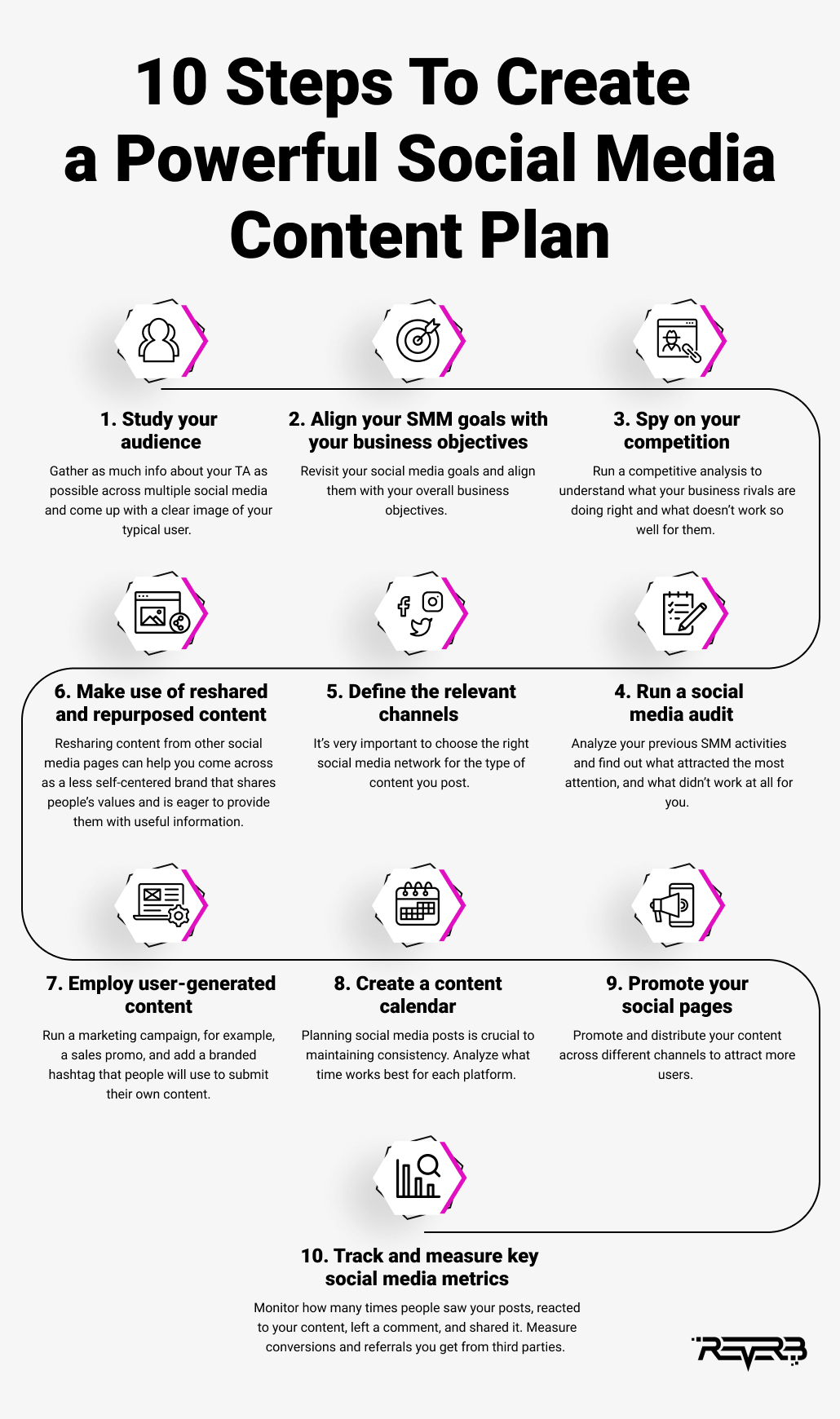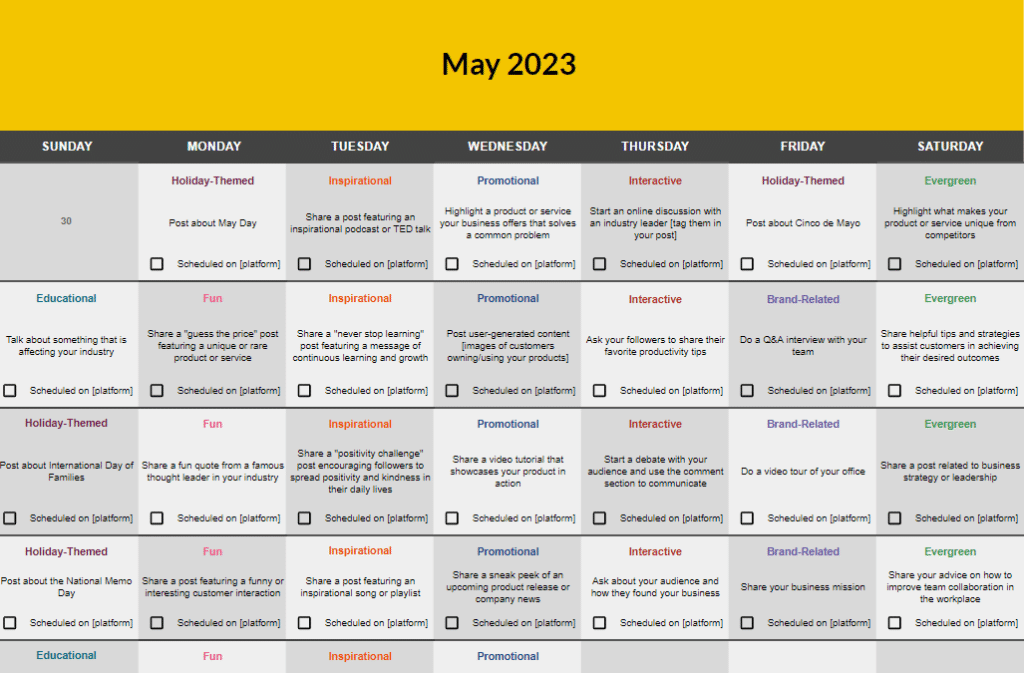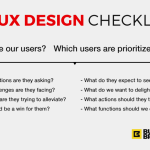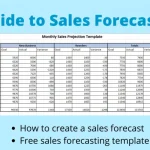Social Media Content Calendar: Plan Ahead for Quality Posts
Imagine smoothly sailing through your social media management tasks, no longer frantically scribbling post ideas on scraps of paper or scrambling to publish content at the last minute. Sounds dreamy, right? Well, buckle up because a social media content calendar is the trusty vessel that can transform that dream into reality.
What is a Social Media Content Calendar?
A social media content calendar is more than just a schedule—it’s a strategic plan that outlines what and when you’ll post on each social media platform. It’s an organizational tool that can save you hours of stress, help you post consistently, and keep your audience engaged. It’s akin to a roadmap that lays out the what, when, and where of your social media content, giving you a bird’s-eye view of your social strategy.
Why Do You Need One?
If social media is the party, then a content calendar is the perfect party planner. Without one, your posts might be sporadic, off-topic, or even worse—absent from the social space. A content calendar ensures that your content is thoughtful, timely, and well-crafted. It can also help you:
– Stay organized: Keep track of important dates, campaigns, and social media activities.
– Save time: Plan your work then work your plan. Efficiency at its finest!
– Maintain quality: No more slapdash posts; craft high-quality content in advance.
– Enhance creativity: Brainstorm and refine ideas in one dedicated session.
– Analyze and improve: Assess what’s working and adjust your strategy accordingly.
The Components of an Effective Content Calendar
Creating a robust content calendar is like making a delicious meal – it requires the right ingredients and a good recipe. Here’s what you’ll need:
– Platform specifics: Each social media platform has its quirks. Customize your content to match.
– Content mix: Strike a balance between promotional, educational, and entertaining posts.
– Timeliness: Consider holidays, seasons, and events that resonate with your audience.
– Frequency: Decide how often to post on each platform based on your capacity and best practices.
– Post details: Include captions, hashtags, images, or links—everything that will accompany your posts.
– Tracking: Monitor performance and tweak your strategy using insights from analytics.
Step by Step: Crafting Your Social Media Content Calendar
Ready to get started? Follow these steps to create a content calendar that will keep your social media game strong:
1. Audit Your Social Media Presence
First things first—take stock of where you’re at. Which platforms are you active on? Which are most successful? What kind of content resonates with your audience? An audit is like cleaning out your closet before you add any new clothes. It sets the stage for what’s to come.
2. Set Your Goals and Objectives
Begin with the end in mind. What do you want to achieve with your social media efforts? More brand awareness, increased website traffic, or higher engagement? Your goals will guide your content creation. It’s like picking your destination before you start your engine.
3. Understand Your Audience
Who are you talking to? Your content should cater to the interests, needs, and behaviors of your target audience. Understanding who they are is like reading a recipe before you start cooking—it influences everything you do.
4. Decide on Content Themes
Themes are your content categories or “buckets.” They could be based on product lines, services, user-generated content, or themes like “Motivation Mondays.” Plan these themes like you’re plotting out meals for the week—well-balanced and diverse.
5. Determine the Frequency of Posts
Quality trumps quantity, but consistency is key. How often you should post varies from platform to platform. Consider your resources, too—better to post less often and maintain quality. It’s like setting a workout schedule you can actually stick to, rather than one that burns you out.
6. Plan Your Content in Advance
This is where the magic happens. Start penciling in posts for the upcoming weeks or even months. Think about timely content like holidays or product launches and evergreen content that’s always relevant. It’s similar to meal prepping for the week; it’s all about preparing well so you can ease through the days ahead.
7. Create and Curate Content
Now, start creating those posts! Write copy, design images or videos, and source content from partners or influencers as needed. Treat this step like your mise en place—the cooking term for “everything in its place.” It makes the actual “cooking” (or posting) part much more effortless.
8. Use a Calendar Tool
Whether it’s a simple spreadsheet or a specialized software tool, having a dedicated calendar that organizes everything is a game-changer. It’s the cornerstone of this whole process—like having a reliable oven for baking. It keeps you on track and in control.
9. Monitor and Adjust
Always keep an eye on how your content performs and be ready to adjust as needed. Maybe certain posts don’t resonate or others perform exceptionally well—use these insights to refine your calendar. It’s comparable to taste-testing dishes and tweaking them to perfection.
Best Practices for Your Social Media Calendar
For your content calendar to be truly effective, keep these best practices in mind:
– Flexibility is Essential: Your calendar isn’t set in stone. Life happens, news breaks, and trends emerge. Be ready to shuffle posts as needed.
– User Engagement: Plan to interact with your audience. Responding to comments and messages encourages a vibrant community.
– Visuals Matter: A picture is worth a thousand words, so invest in high-quality images and graphics.
– Cross-Promotion: Use your content to promote other channels, but tailor the message to each platform.
– Regular Reviews: Schedule weekly or monthly check-ins to assess your calendar’s performance and make necessary adjustments.
Conclusion

Crafting a social media content calendar is your secret weapon for stress-free, quality social media management. Plan ahead, be strategic, and watch as your social media presence flourishes with engaging, well-timed, and diverse content.
Finally, remember that a content calendar is a living document. As you track your successes and learn from your not-so-perfect posts, you can continuously refine your calendar for even better results. Happy planning!


